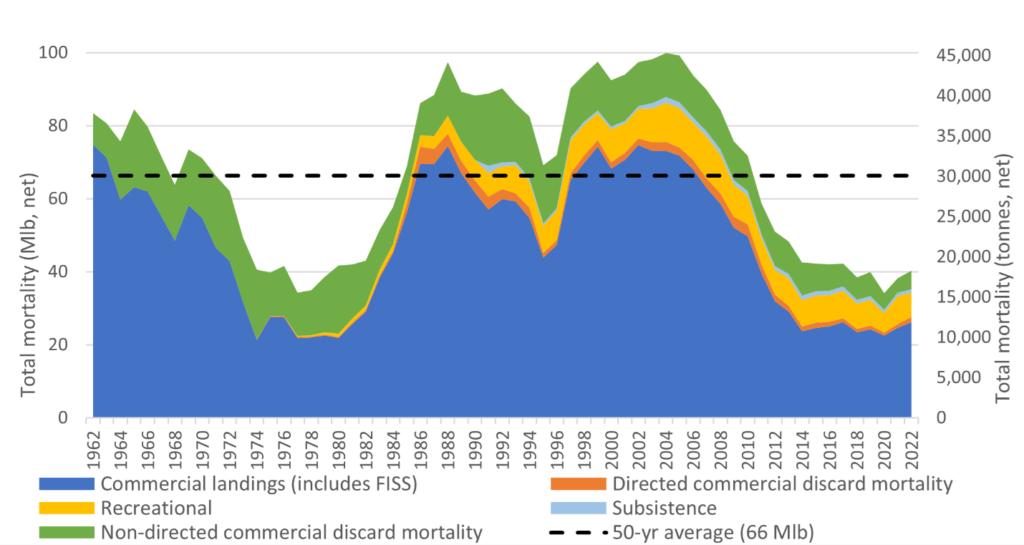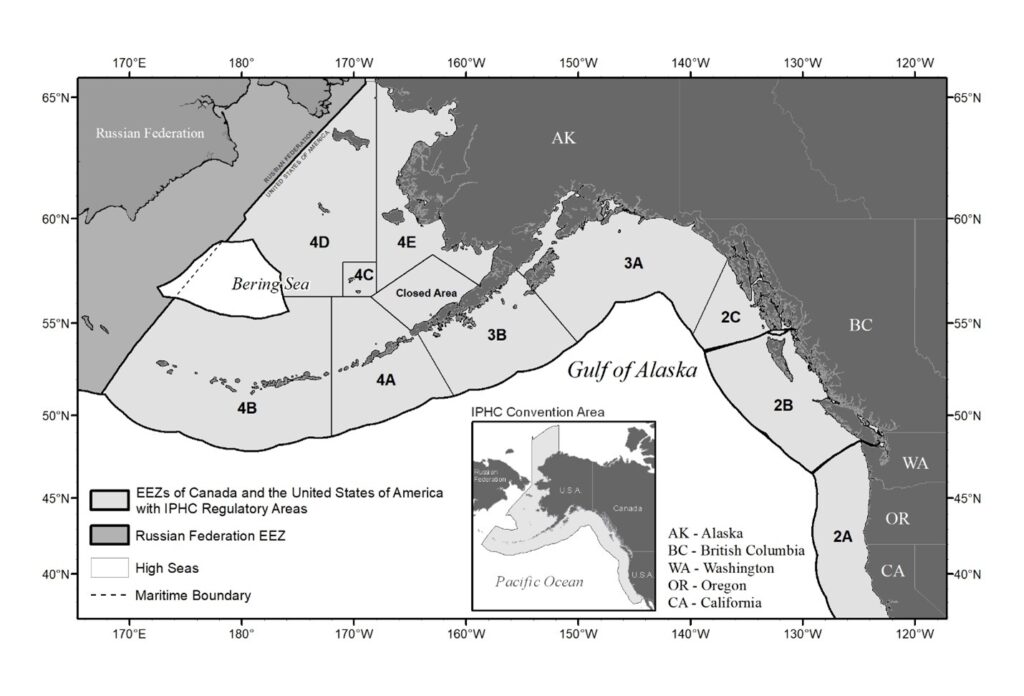Pacific halibut are captured from the depths of the north Pacific Ocean and Bering Sea in a number of ways. The fish are primarily targeted by the commercial longline fishery and by recreational fishers, as well as taken for personal use (subsistence). Additional mortality occurs in the form of non-directed commercial discard mortality (bycatch) in commercial fisheries targeting other species that are not allowed to retain Pacific halibut. Over the last half century, Pacific halibut removals from all sources have ranged annually from 15,517 to 45,309 metric tons (34.2 to 99.9 million pounds), with an average of 30,113 mt (66.4 million pounds). Total removals in 2022 were 18,284 mt (40.3 million pounds), 6% up from 2021 (17,314 mt or 38.2 million pounds), but 39% below the 50-year average. In 2022, an estimated 11,857 mt (26.1 million pounds) were landed from commercial fisheries (including landings from the Fishery-Independent Setline Survey or FISS), 2,994 mt (6.6 million pounds) from recreational fisheries, 2,998 mt (6.6 million pounds) from directed and non-directed commercial discard mortality, and 435 mt (1.0 million pounds) from subsistence.

Data depicted in the figure is available in IPHC Data library, see TSD-09.
Research shows that Pacific halibut form a single genetic stock across their entire range and abundance estimates are, therefore, derived for the coastwide population. However, management of the resource is conducted on a Regulatory Area basis. IPHC first defined Regulatory Areas in 1932. Over the years, IPHC Regulatory Areas have been redefined and reshaped. The present arrangement was established in 1990. There are currently three major Regulatory Areas – Areas 2, 3, and 4, and each is further divided into subareas as shown in the map.

The IPHC Fishery Regulations published here are for information purposes only. Official regulations adopted by the Contracting Parties are available.
This approach reflects the sovereign rights of the coastal state within its Exclusive Economic Zone as set out in Part V of the United Nations Convention of the Law of the Seas (UNCLOS), in particular Article 73.
Today’s commercial fishing fleet is diverse, using various strategies to harvest the resource. Both the Canadian and U.S.A. federal fisheries agencies have implemented individual quota (IQ) systems in Alaska and British Columbia.
This is a summary of Alaskan Pacific halibut IFQ landings expected to occur within the next ~12 hours.
The recreational fishery for Pacific halibut had a slow beginning. Prior to 1973, all fishing for Pacific halibut was governed by the commercial fishing regulations.
A time-series of subsistence Pacific halibut removals prepared by IPHC Secretariat (updated 11 January 2023).
Not all Pacific halibut caught will die from the injuries if the fish are returned to the sea (discarded) in a careful and timely manner.